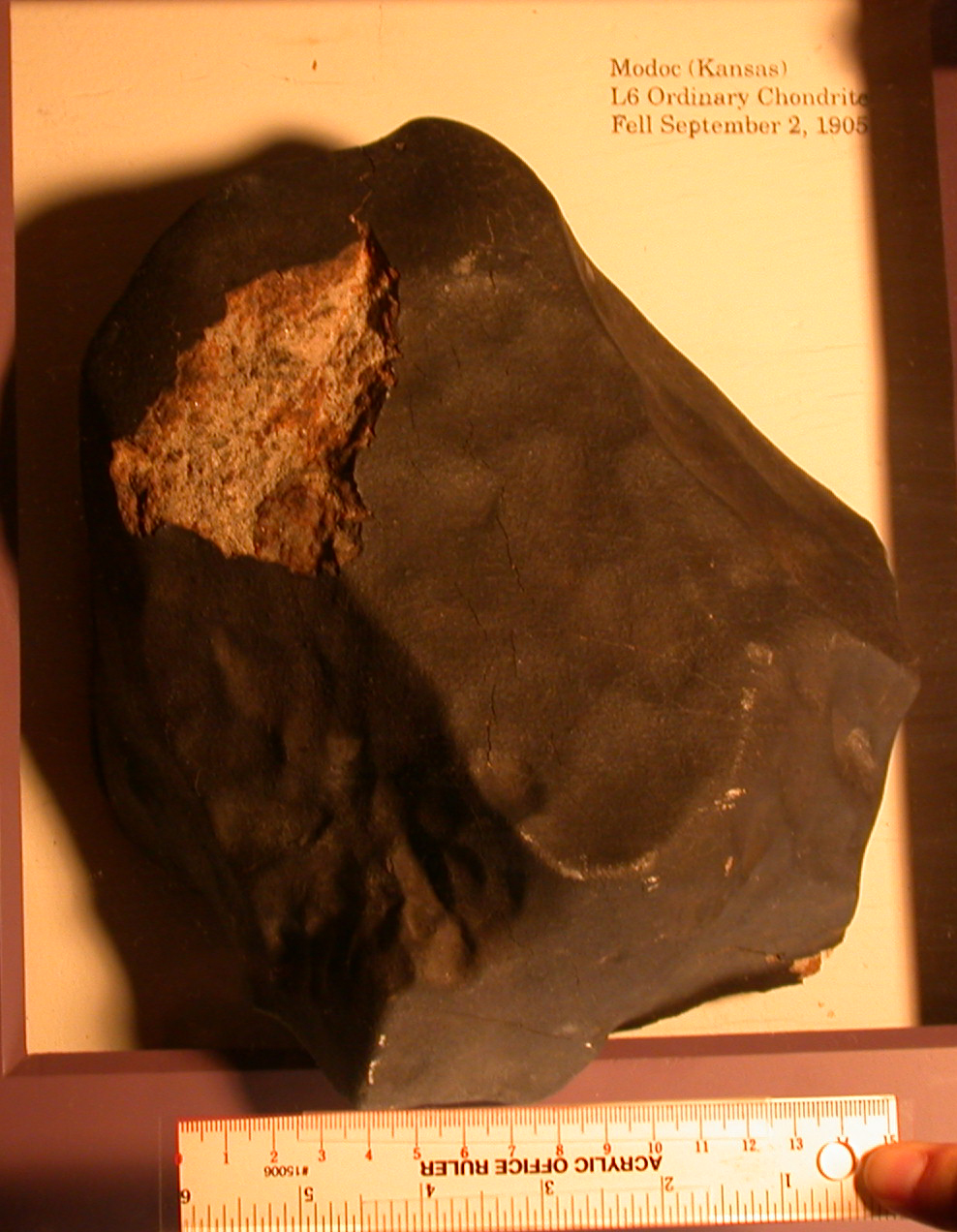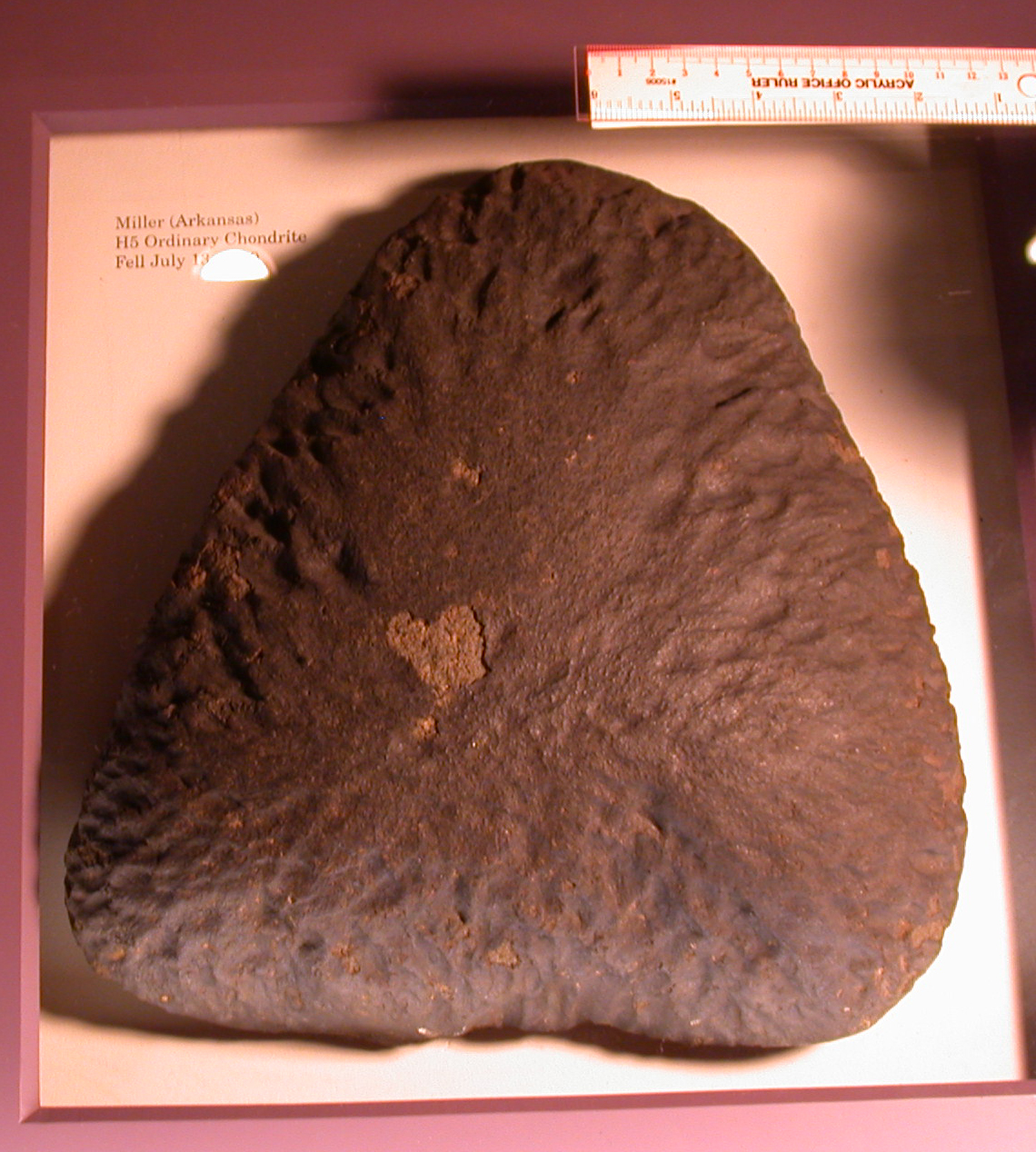 Miller < EXAMPLES > Modoc
Miller < EXAMPLES > Modoc

Fusion Crust
Meteorites come from space, where their temperatures are very, very low. Meteorites
enter Earth's atmosphere at very high speeds, and they are slowed down by friction
with the air. When a meteorite passes through the atmosphere at high speed, friction
with the air heats the outer part to temperatures so high the rock melts.
If the meteorite breaks into many pieces in the upper atmosphere, each piece continues
to move at high speed, and heats up separately.
Because rock transmits heat very poorly, the cold inner part of the meteorite stays cold
even as the outermost part is heating up and melting. Because of friction with the
atmosphere, the meteorite, or its broken up parts, slows down, and finally loses its
forward speed and is simply falling, like a rock dropped from an airplane. If you drop
a rock from an airplane, its speed is too low to ever cause the rock to melt by friction
with the air. The fusion crust only develops while the meteorite keeps a lot of the
speed it had when it hit the atmosphere.
What is the fusion crust made of?
Stony meteorites, such as Modoc, are made of minerals with silicon, aluminum, magnesium,
calcium and iron as the main elements, all combined with oxygen. These melt to a glass,
which is continuously removed as tiny droplets by
the force of air, which drags on the entire object.
At the point where the meteorite loses sufficient speed that it is no longer hot enough
to melt, it begins to cool, and the last bit of melted rock, on the surface of the meteorite,
cools rapidly to a brownish glass
In this glass, the mineral magnetite, Fe3O4, forms due to the presence of oxygen in the air,
and iron from the meteorite.
The abundant, tiny, black magnetite crystals, embedded in a thin layer of brownish glass,
give the fusion crust its dark color.
In some meteorites, such as Miller, the glass formed on the
surface is preserved in flow lines.
Fusion crusts can have different colors from dark black to dark brown, depending on
the iron content at the surface of each piece.
Their surface luster can also be glossy, or dull, depending on the abundance of calcium-
bearing minerals contributing to the glass.
The thickness of fusion crust is usually less than 1 millimeter, but because the melted
rock flows over the surface during flight, it can fill depressions, and become thicker
on parts of the meteorite surface protected from the force of passing air.
Heat shields of spacecraft are like Miller: (photos from NASA archives)
 Gemini 11
< EXAMPLES > Gemini
Gemini 11
< EXAMPLES > Gemini 
 Mercury
< EXAMPLES > Apollo 17
Mercury
< EXAMPLES > Apollo 17 
More information about fusion crust can be found in:
1) Richard O. Norton, The Cambridge Encyclopedia of Meteorites,
Cambridge University Press, 2002.
links here...
 Miller < EXAMPLES > Modoc
Miller < EXAMPLES > Modoc

 Gemini 11
< EXAMPLES > Gemini
Gemini 11
< EXAMPLES > Gemini 
 Mercury
< EXAMPLES > Apollo 17
Mercury
< EXAMPLES > Apollo 17 